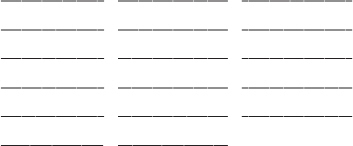 1. Here are nine names, each with at least one anagram. Finding a dozen is good going, 14 very good, and 17, excellent.
1. Here are nine names, each with at least one anagram. Finding a dozen is good going, 14 very good, and 17, excellent.Many first names are also words—just ask Grant or Rose. Yet some are less obvious. Take a church organ for example. This elaborate keyboard has multiple stops, or handles to control the pipe’s ranges. (When organists opt for full volume, they pull out all the stops.) One stop is the CLARABELLA, the modifier of sweet tones. The source is Latin, being clarus (clear) and bellus (beautiful).
Equally elegant is TIFFANY, a silken blend taking its name from a Greek word, THEOPANY, or the appearance of God to a human being. The angel looming from the burning bush, say, could be called a theophany. So what’s the material link to the cloth? For our best hint, let’s meet girl number three.
A patient woman, VERONICA, stood on the road to Calvary, waiting for Christ en route to his crucifixion. When Jesus appeared, she offered a cloth to mop his brow. After the wipe, goes the legend, Christ’s facial image remained in the weave. Hence Vera Iconica, or ‘true image’, is the shadowy proof of a deity imprinted on tiffany, perhaps, or eBay toast.
Traditionally in Spanish bullfighting, the showy flourish of the red cape is called a veronica, as the action mimics the wiping of that holy cloth.
 1. Here are nine names, each with at least one anagram. Finding a dozen is good going, 14 very good, and 17, excellent.
1. Here are nine names, each with at least one anagram. Finding a dozen is good going, 14 very good, and 17, excellent.
| (a) Abel | (d) Ernest | (g) Mary |
| (b) Amy | (e) Imelda | (h) Rhoda |
| (c) Andrew | (f) Kate | (i) Rosalind |

 2. What four names below are not also found in the dictionary as common words? (And how many of the genuine words can you define?)
2. What four names below are not also found in the dictionary as common words? (And how many of the genuine words can you define?)
